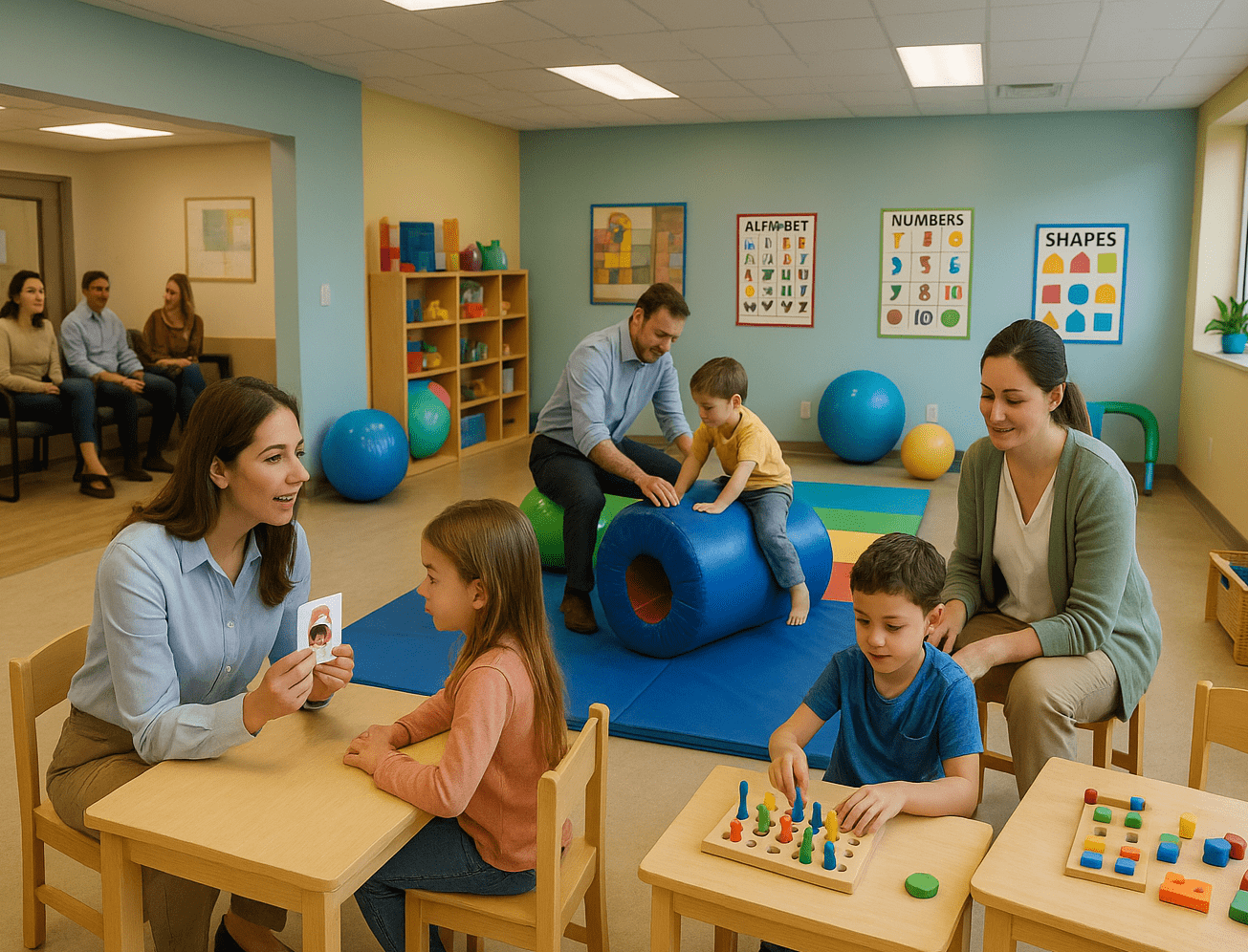Explore Our Pediatric Services
At LAIPT, we are dedicated to providing a wide array of pediatric services tailored to meet the unique needs of your child. Our services range from routine check-ups to specialized medical treatments, ensuring your child receives the best possible care. We focus on creating a comforting and supportive environment for both children and their families.

Speech Therapy (in person and telemedicine)

Occupational Therapy (in-person and telemedicine)

Center-based Program (in-person only)
Methods We Currently Use at LAIPT
NDT
Neuro-Developmental Treatment enhances motor skills and coordination.
Sensory Integration
Helps children process sensory information effectively.
Listening with the Whole Body
Enhances attention and focus through active listening techniques.
Child-directed Play Therapy
Uses play to address emotional and behavioral challenges.
PROMPT
Promotes speech development through tactile cues.
Writing Without Tears
Makes handwriting fun and easy for children.
SOS Feeding
Addresses feeding challenges and picky eating.
Visual Development
Improves visual skills and perception.
Language Expansion
Enhances communication skills and vocabulary.
Dialog Book Reading
Encourages interactive reading and language development.
Direct Modeling
Demonstrates desired behaviors and skills.
Simple Signs
Uses basic sign language to aid communication.
Communication Temptation
Creates opportunities for communication through engaging activities.
Natural Language Acquisition
Facilitates language development in natural contexts.
Hannen’s It Takes Two to Talk
Empowers parents to support their child's communication skills.
Insurance Coverage Options
We accept Kaiser, Cedars, Aetna, BlueShield, UHC, La Care, Molina, HealthNet, and La Care covered plans. Contact us for more details.
Self-Pay
$450 Evaluation
$180 Per session
Affordable assessment for uninsured or out-of-network patients
- Comprehensive health evaluation
- No insurance required
- Flexible scheduling
